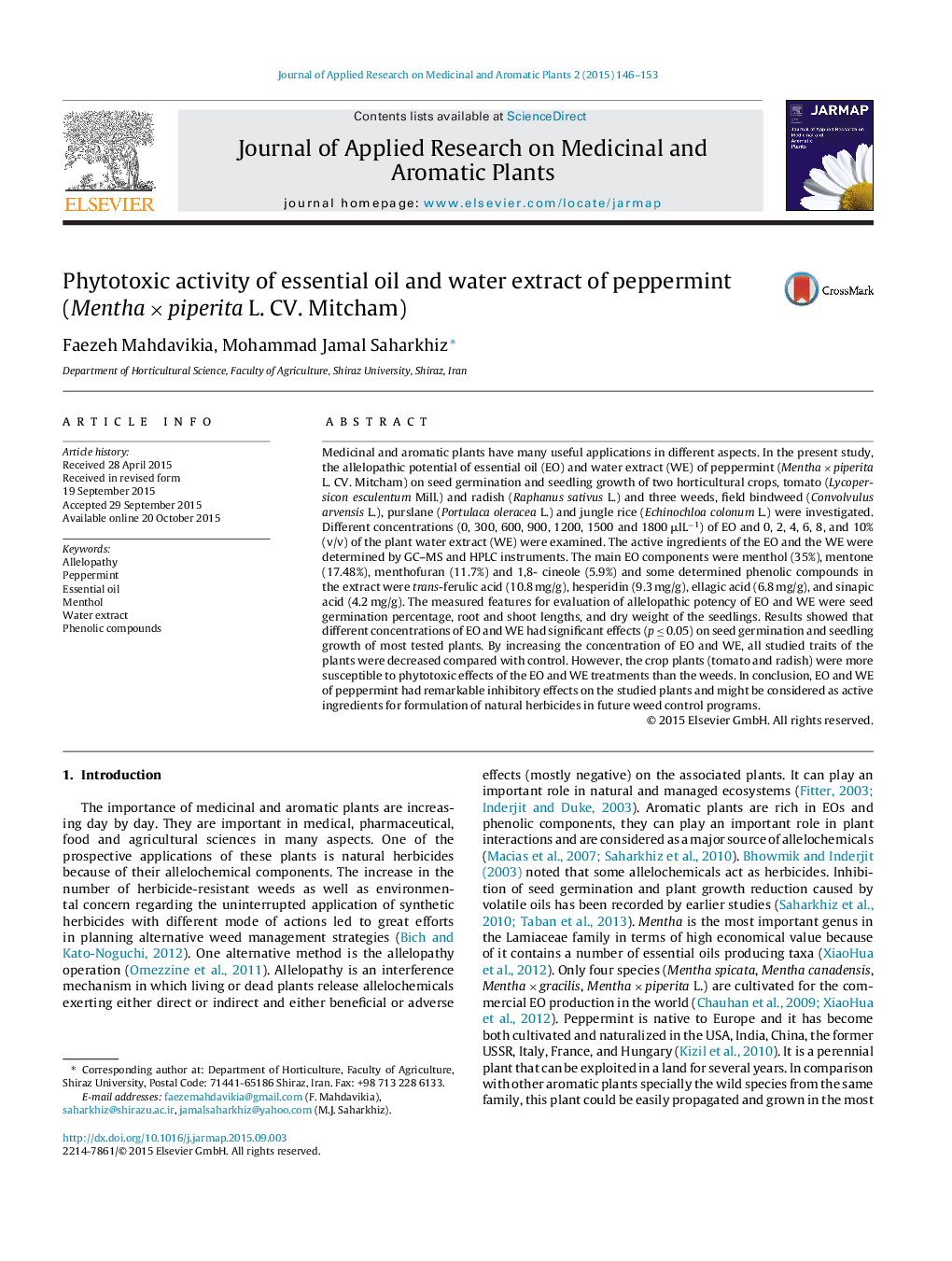| Article ID | Journal | Published Year | Pages | File Type |
|---|---|---|---|---|
| 3099147 | Journal of Applied Research on Medicinal and Aromatic Plants | 2015 | 8 Pages |
•Peppermint essential oil completely suppressed tomato seed germination at 900 μl/L−1.•The maximum inhibitory effect (23.5%) of peppermint essential oil on field bindweed was at 1800 μl/L−1.•Tomato and radish seed germination was suppressed by 2 and 6% of water extract, respectively.•The water extract at 10% decreased seed germination of jungle rice by 97%.•The water extract at 10% decreased seed germination of field bindweed by 77%.
Medicinal and aromatic plants have many useful applications in different aspects. In the present study, the allelopathic potential of essential oil (EO) and water extract (WE) of peppermint (Mentha × piperita L. CV. Mitcham) on seed germination and seedling growth of two horticultural crops, tomato (Lycopersicon esculentum Mill.) and radish (Raphanus sativus L.) and three weeds, field bindweed (Convolvulus arvensis L.), purslane (Portulaca oleracea L.) and jungle rice (Echinochloa colonum L.) were investigated. Different concentrations (0, 300, 600, 900, 1200, 1500 and 1800 μlL−1) of EO and 0, 2, 4, 6, 8, and 10% (v/v) of the plant water extract (WE) were examined. The active ingredients of the EO and the WE were determined by GC–MS and HPLC instruments. The main EO components were menthol (35%), mentone (17.48%), menthofuran (11.7%) and 1,8- cineole (5.9%) and some determined phenolic compounds in the extract were trans-ferulic acid (10.8 mg/g), hesperidin (9.3 mg/g), ellagic acid (6.8 mg/g), and sinapic acid (4.2 mg/g). The measured features for evaluation of allelopathic potency of EO and WE were seed germination percentage, root and shoot lengths, and dry weight of the seedlings. Results showed that different concentrations of EO and WE had significant effects (p ≤ 0.05) on seed germination and seedling growth of most tested plants. By increasing the concentration of EO and WE, all studied traits of the plants were decreased compared with control. However, the crop plants (tomato and radish) were more susceptible to phytotoxic effects of the EO and WE treatments than the weeds. In conclusion, EO and WE of peppermint had remarkable inhibitory effects on the studied plants and might be considered as active ingredients for formulation of natural herbicides in future weed control programs.
